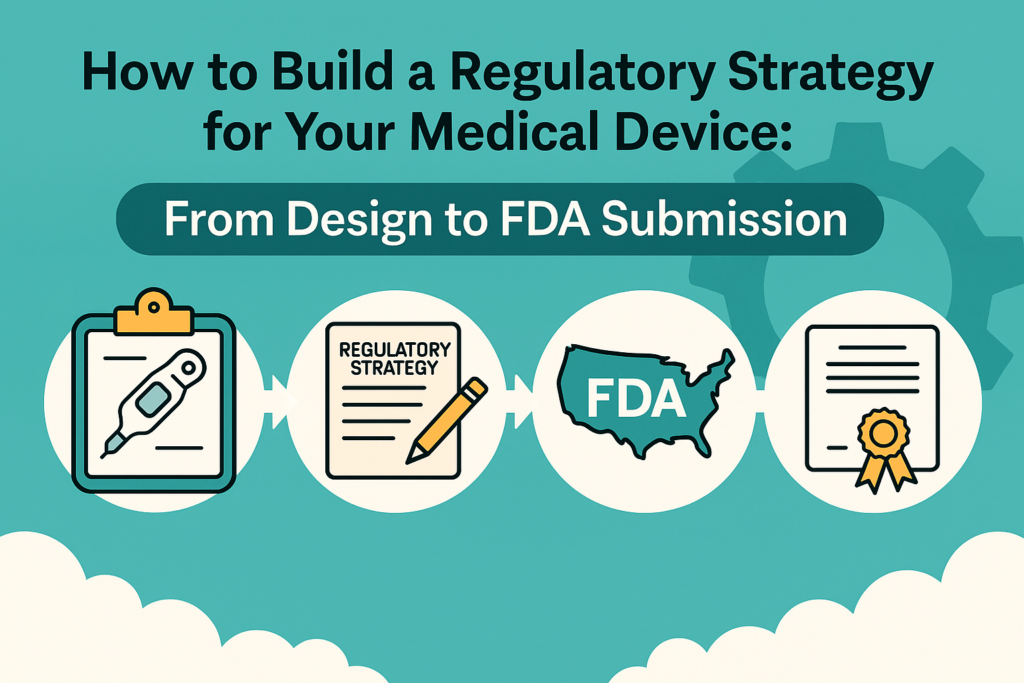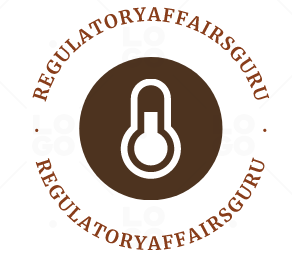
1️⃣ What is a regulatory strategy?
A regulatory strategy is a working, living plan that balances product development, design, risk management, testing, and go-to-market strategy with FDA expectations. Hence, your medical device enters the U.S. market efficiently and in compliance.
It’s not a paper exercise or a “submission plan.” It:
✅ Determines device classification, product code, and applicable regulations.
✅ Decide whether 510(k), De Novo, or PMA is your best option.
✅ Transfers FDA-recommended standards and guidelines into your testing and design.
✅ Simplifies claims and labeling, correlating allegations with evidence.
✅ Demands preclinical and clinical data requirements to support clearance.
✅ Establishes realistic timelines and budgets for investor and internal alignment.
✅ Is aligned with your Quality Management System (QMS) and design controls.
A winning strategy:
✅ Eradicates misaligned claims and design.
???? It kills unnecessary or insufficient testing.
???? Streamlines FDA interactions and reduces delays.
???? It enhances investor confidence by showcasing regulatory expertise.
???? This approach mitigates the risk of rework, rejection, and cost escalation.
2️⃣ Know Your Device and Market Claims
Your regulatory strategy begins with knowing what your device does, who it treats, and what claims you make.
Why it matters:
The classification and testing of your device are determined by its indication for use and intended use.
Claims beyond your test and design may trigger more stringent regulatory burdens (e.g., 510(k) to PMA).
The FDA reviews the alignment of claims, labeling, risk control, and testing.
Action steps:
✅ Define in clear language:
The intended use should be clearly defined, such as “monitoring adult diabetes patients’ blood glucose level.”
Clearly define the indications for use, taking into account the target condition, patient group, and setting.
✅ Define significant features and technology, such as connectivity, AI/ML algorithms, sensors, and user interfaces.
✅ Cross-check other approved competitors’ claims on comparable products to find reasonable claims that fit your risk and design profile.
✅ Avoid over-claiming (“lowers the risk of a heart attack” with no data to back it up) since it will trigger FDA resistance.
This transparency allows you to design and substantiate claims, select the correct regulatory pathway, and plan related testing and labeling.
3️⃣ Analysis of the Regulatory Landscape
Evaluating the regulatory environment informs you of what time and effort the FDA will require to design and test.
Steps:
✅ Use the FDA 510(k) Database to:
Find similar devices.
Read their indications, predicates, and product codes.
Please review their testing summaries as necessary.
✅ Use the FDA Product Classification Database to confirm the classification and associated rules for your device.
Confirm classification and associated rules.
Discover special controls for your device class.
✅ Read applicable FDA guidance documents:
Please review the specific guidance documents related to your device class.
The FDA provides general biocompatibility guidance (ISO 10993), EMC (IEC 60601), and SaMD.
✅ Examine FDA enforcement actions and recalls for similar products in your industry to take advantage of industry errors.
✅ Examine competitive product clearance pathways to determine if your device is possible with a 510(k), De Novo, or PMA.
This test ensures your strategy is based on current FDA paradigms, not guesswork.
4️⃣ Select Your Regulatory Pathway
Based on your landscape analysis, select your regulatory pathway:
✅ 510(k) if:
You have a predicate device with the same intended use and technology.
You can show substantial equivalence.
✅ De Novo if:
You don’t have a predicate.
Your device is a low-to-moderate risk.
You can recommend general/special controls to mitigate risks.
✅ PMA if:
Your device is high-risk (Class III).
It comprises new technology with significant unknown safety/effectiveness profiles.
✅ Consider Breakthrough Device Designation if your device provides a substantial benefit relative to other products for severe conditions.
Use a pre-submission (Q-Sub) to anchor your chosen course on the FDA, reducing risk and avoiding unnecessary testing.
5️⃣ Risk Management and Design Control Integration
ISO 14971 (Risk Management) and 21 CFR 820 (Design Controls) are the regulatory building blocks of your device development.
✅ Conduct a risk analysis to:
Identify hazards from hardware, software, usability, and environmental factors.
Estimate severity and probability of occurrence.
Map mitigation measures (e.g., alarms, software checks, instructions).
✅ Document a risk management plan and have a risk file as a current record in your Design History File (DHF).
✅ Plan design verification and validation testing against identified risks:
For instance, if you identify overheating as a risk, conduct temperature tests under various usage conditions.
Test connectivity, data integrity, and cybersecurity.
The FDA looks at whether your device risks are minimized and well controlled, so conducting this step is essential to the success of regulations.
6️⃣ Testing Strategy
Your test plan should be developed after completing your risk analysis, claims, and regulatory process.
Plan for:
✅ Bench testing to guarantee performance, reliability, and safety during normal and worst-case operations.
✅ Biocompatibility testing (ISO 10993) will be conducted in areas where patients come into contact with the product.
✅ EMC and electrical safety testing (IEC 60601) is conducted for electronic devices.
✅ Software verification, validation, and cybersecurity testing are required if your product includes software or has connectivity, according to the FDA’s premarket software policy.
✅ Human factors and usability testing for products taken to the users.
✅ Clinical testing is required if the risk category of your device or its innovation necessitates human data to establish safety and effectiveness.
Bake testing into FDA-recognized standards to reduce AI requests and review delays. Create a test matrix that links each claim and risk to the applicable test.
7️⃣ Pre-Submission Interaction with FDA
Pre-submissions (Q-subs) are a high-leverage instrument to validate your regulatory plan before investing in expensive testing or submission readiness.
✅ Clear your selected regulatory pathway with the FDA.
✅ Negotiate and agree on testing and clinical study plans.
✅ Agree on labeling and claims with the FDA.
✅ Understand the FDA’s new tech requirements.
Strategy:
✅ Arrive with a clear-cut pre-sub package:
Describe the device and its intended use.
Selected regulatory pathway and product code.
Provide a rough written testing plan and clinical study protocol.
5–8 targeted questions for the FDA.
✅ Arrive at the meeting with:
Provide a briefing on your internal strategy.
Provide a concise slide presentation that concisely summarizes your device, its claims, and any associated issues.
✅ Get FDA feedback and incorporate it into test and submission plans.
8️⃣ Label and Claims Development
Labels and claims will have to harmonize.
✅ Your cleared indications and intended use.
✅ Conducted testing and available evidence.
✅ Risk mitigation analysis (warnings, precautions).
Steps:
✅ Draft Instructions for Use (IFU) upfront, harmonizing design and risk mitigations.
✅ Patient/clinician-friendly language with graphics, if needed.
✅ Develop device and package labels, including UDI planning for regulatory compliance.
✅ Harmonize marketing claims with cleared indications to prevent misbranding.
Label mismatches are among the top reasons for 510(k) denials. Coordinating your label plans with your test and regulatory plans prevents post-submission issues.
9️⃣ Budget and Timeline Alignment
A valid timeline and budget:
✅ Keeps your team on track.
✅ Establishes investor expectations.
✅ Prevents rushed testing or documentation.
Include:
Design and development: 6–18 months, depending on complexity.
Testing: 3–9 months, depending on bench, EMC, biocompatibility, and clinical testing.
Preparing for submission: 1–2 months with eSTAR for structure and QA.
FDA review:
510(k): 90 days (average 120–150 with AI cycles).
De Novo: 150–180 days (typically 6–12 months with interactions).
PMA: 180+ days, typically 1–2 years with clinical.
Budget for:
The cost of testing ranges from $50K to $500K, depending on the scope of the study.
If clinical studies are necessary, the budget can range from $100K to $2M+.
The FDA will charge user fees of $21,760 for the 510(k) standard in 2025.
Possible retesting if the FDA needs more data.
If you choose to work with external RA/QA professionals, you will incur consultant fees.
1️⃣0️⃣ Ready Your Regulatory Submission
Use FDA eSTAR for submission preparation:
It is automatically structured and aligns consistently with the FDA review processes.
✅ Validation is built-in to find missing information.
Includes:
Cover letter.
The document also includes the FDA forms (3514, 3881).
Table of Contents.
The document includes the device description and engineering drawings.
Predicate analysis (510(k)) or risk/benefit analysis (De Novo).
Testing summaries and reports are also included.
Labeling and IFUs.
Ensure that the declarations align with the established standards.
Perform a final QA check for consistency, clarity, and completeness before submitting to prevent rejections in RTA.
1️⃣1️⃣ Readiness After Submission
After submission:
✅ Track FDA timelines and be ready to receive AI requests.
✅ Reply promptly to prevent clock holds and delays.
✅ Revise documentation according to your QMS and DHF.
✅ Schedule post-clearance activities:
List and register the devices.
Ensure adherence to the UDI regulations.
Procedure for complaints and processing MDR.
Organize your post-market surveillance plan.
FDA approval is not the destination: A robust post-market compliance strategy protects your business and patients.
???? Summary: Why a Regulatory Approach Matters
✅ Saves time and expense via regulatory requirement alignment in design.
✅ Eliminates FDA review surprises.
✅ Obtains investor and partner confidence.
✅ Accelerates time to market, with resulting ROI and maximum patient benefit.
✅ Regulates your business for readiness, allowing for pipeline scalability.
📢 Coming Next:
“How to Prepare for FDA Inspections: A Complete Guide for Medical Device Startups.”
✅ What triggers FDA inspections?
✅ Preparing your team and QMS for readiness.
✅ Handling inspections confidently without panic.
